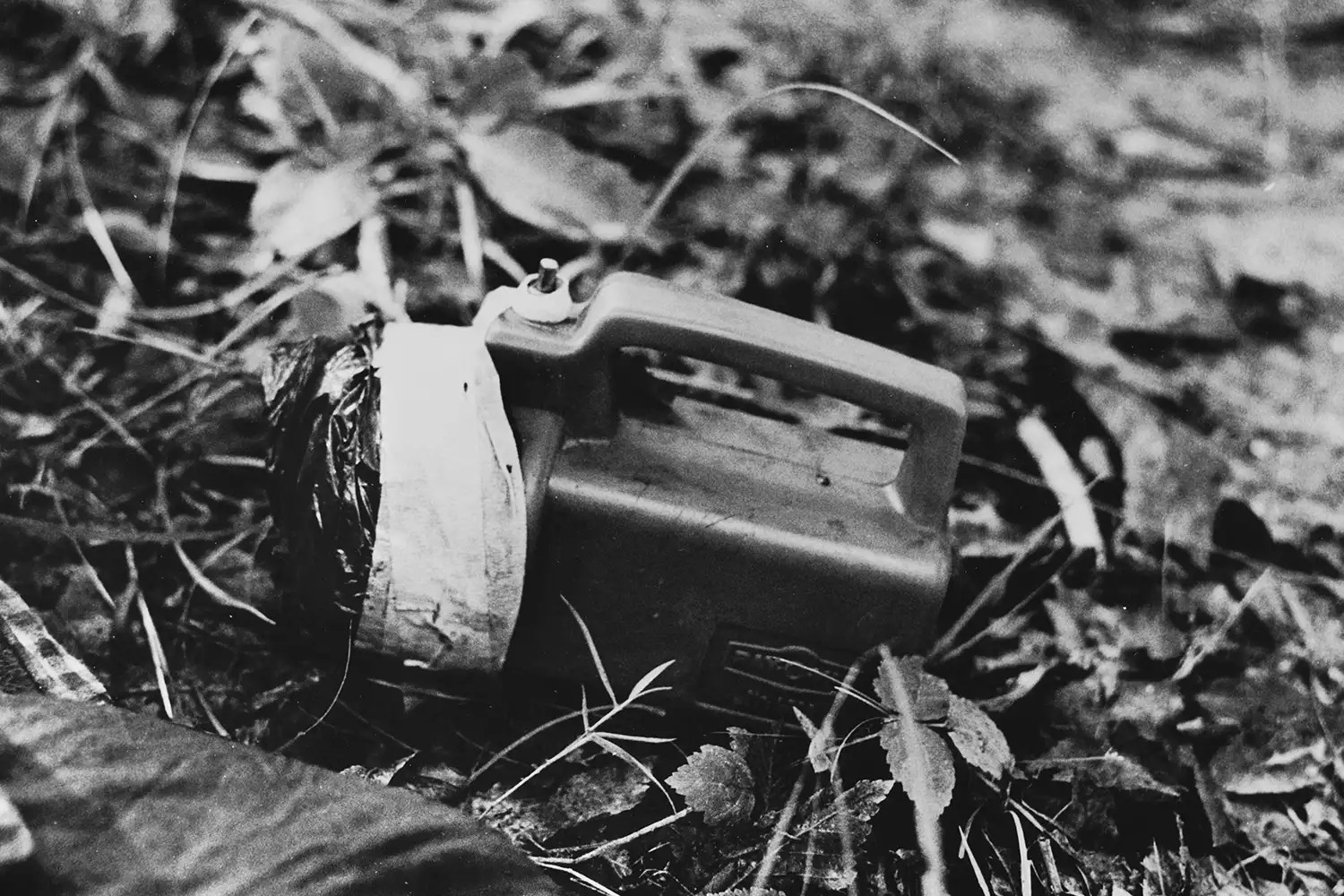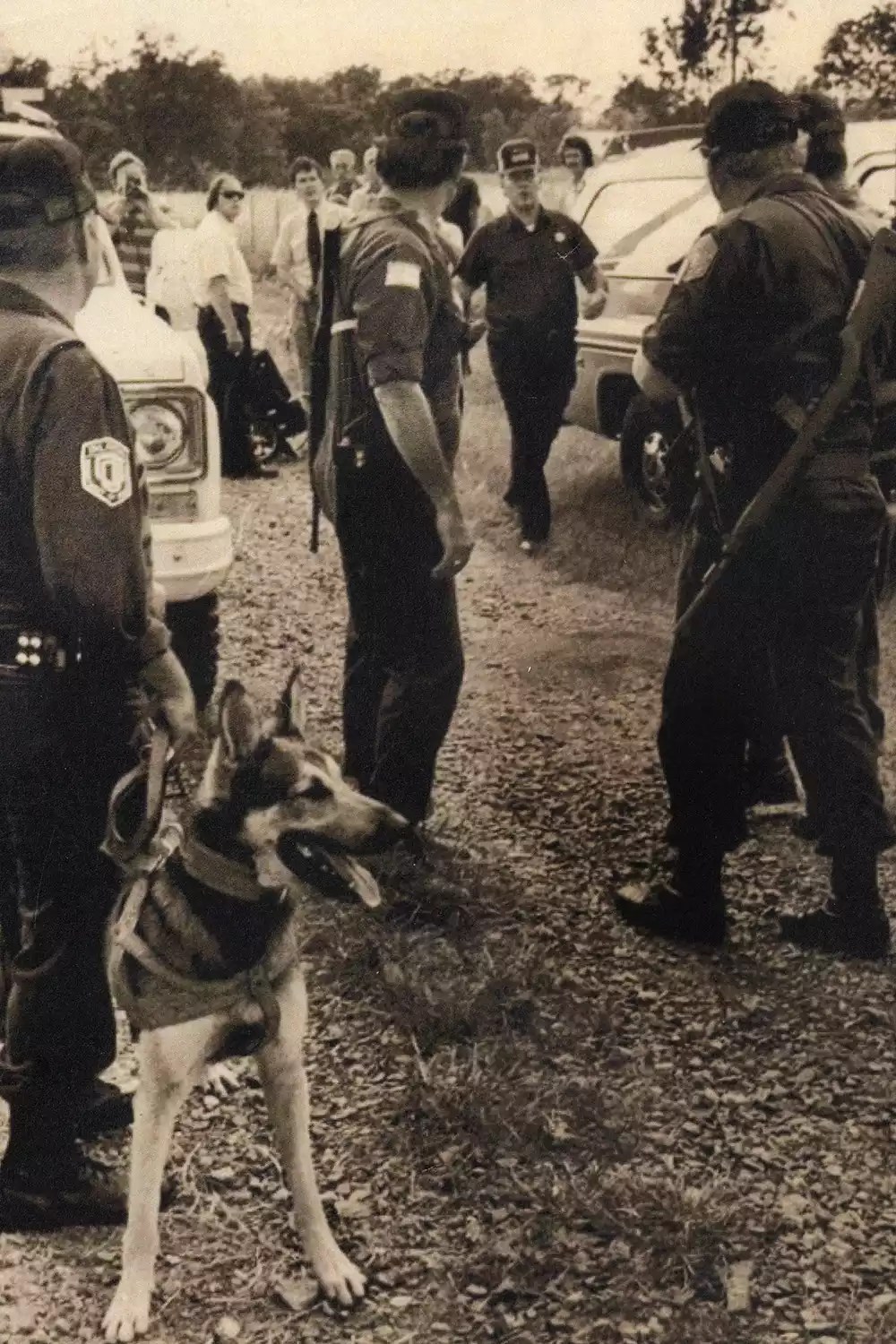Lori Farmer; Denise Milner; Michele Guse.

It was supposed to be two weeks of fun for more than 100 Girl Scouts who arrived atCamp Scott, near Locust Grove, Okla., on June 12, 1977. But, sometime in the darkness of that night, an intruder entered through the back of a tent, killing and sexually assaulting three girls —Lori Farmer, 8,Michele Guse, 9, andDenise Milner, 10. Their strangled and mutilated bodies were left under a tree about 100 yards from their tent.
Law enforcement scoured the wooded area looking for clues. Near the bodies, investigators found a red plastic flashlight with a piece of a garbage bag taped over the lens. A newspaper was stuffed inside to keep the batteries from rattling.
“They examined the role of masking tape and the newspaper and both of the fractures match perfectly with evidence found on the flashlight,” Mayes County Sheriff Mike Reed says in the two-hour premiere of the seventh season ofPeople Magazine Investigates. The episode, titled “Girl Scout Murders,” airs tonight at 9 p.m. ET on ID and streams on Max.
(An exclusive clip for the episode is below.)
But, it wasn’t until a prison employee recognized two wedding photographs also found at the cave and later broadcast on the nightly news that police believed they had their suspect: Fugitive and convicted rapist Gene Leroy Hart. Police learned that Hart had developed the photos as part of a prison work program years earlier.
Gene Leroy Hart.

After a 10-month manhunt — one of the largest in Oklahoma history — Hart was captured at a cabin in the Cookson Hills on April 6, 1978. During the trial the following year, Hart’s defense attorneys claimed he was framed and questioned how the black and white wedding photos ended up in the cave because Hart allegedly left them behind after he escaped. “Our take from that was the evidence had been planted,” says Hart’s defense attorney Gary Pitchlynn.
A modified red flashlight was found at the scene.Oklahoma State Bureau of Investigation

Oklahoma State Bureau of Investigation
After more than seven days of testimony, Hart was acquitted of the murders to the disappointment of the family of the three girls.
Sent back to prison to continue his sentence, Hart died two months later of a heart attack in the exercise yard.
The tent where the girls were attacked.Mayes County Sheriff’s Department

Mayes County Sheriff’s Department
In the years following the murders, new theories and suspects emerged. In one instance, a woman came forward alleging that her brother and his two friends killed the girls. Police looked into the claims but ruled them out.
In 1989, the FBI tested a semen stain found on a pillowcase inside Michele’s sleeping bag that was a partial match to Hart. However, it would be another 20 years before the next development in the case occurred, when more sophisticated DNA testing was done. Although the results were inconclusive, they could eliminate other suspects but not Hart. It was enough to convince Reed that Hart committed the murders.
“Everything I look at still points to Gene Hart,” he says. “And I don’t have a single other thing pointing to somebody else.” But the case is still open.
Hours after the murders in 1977, law enforcement scoured the wooded area on the first day of a 10-month manhunt, one of the largest in Oklahoma history.Mayes County Sheriff’s Department

“Bo and I have been open to listening to people, and we still are," Sheri says. “It’s been 46 years, and I feel the same today as I did then — that we care about the truth.” As promised to Lori, Sheri and Bo have dedicated their lives to victims’ rights and giving parents like themselves a voice.
“In our case, when the verdict was read, the judge said, ‘in case number 777025, not guilty.’ And honestly, it was at that moment I realized that Lori — to the court — did not even have a name,” says Sheri. “When we walked away with a not guilty verdict, that was one of the things that stuck in my mind that I hoped I could change, was the way we view victims. The man sitting there accused had a name, but the three girls did not have a name.”
In 1984, the couple formed the Oklahoma chapter of Parents of Murdered Children. In 2018, Sheri successfully campaigned for the passage of Marsy’s Law in Oklahoma, which called for increased protections for victims.
Three crosses in memory of the three girl scouts murdered in 1977.Courtesy Lori Whiteday and Elizabeth Boney

Courtesy Lori Whiteday and Elizabeth Boney
“In 1977, there were no victims’ rights,” says Sheri. “‘Victims are the person who died. You are not the victim.’ Now, we know that when something happens, victims’ families are victimized also. We worked to get that recognized that we are those people, we do need help.”
Today, Sheri still works as a victims’ rights advocate giving talks to students, legislators, civic organizations and law enforcement.
Want to keep up with the latest crime coverage? Sign up forPEOPLE’s free True Crime newsletterfor breaking crime news, ongoing trial coverage and details of intriguing unsolved cases.
In addition, Sheri says, she wants to make sure Lori, Denise and Michele are remembered.
“I always call this Lori’s legacy of love,” she says. “She didn’t get to live and grow up, but she does have a legacy. And to me it is love. That’s how Bo and I have lived our lives. Our children are all grown up. Our grandchildren are a lot grown up. But they have learned how to live with their sister being murdered and make amazing choices in what they do and how they conduct their lives. Our grandchildren have done amazing things.”
After the murders, Camp Scott was shut down. In 1988, the Girl Scout Counsel sold the property, and today it’s a hunting ground.
“Closure will not be a part of our lives,” says Sheri. “Our pathway has always beenjustice for Lori and to help other people and it always will be.”
Anyone with information about the murders is asked to contact OSBI at 405-848-6724.
People Magazine Investigates: Girl Scout Murders, the two-hour Season 7 premiere, will air tonight at 9 p.m. ET on ID and streams on Max.
source: people.com